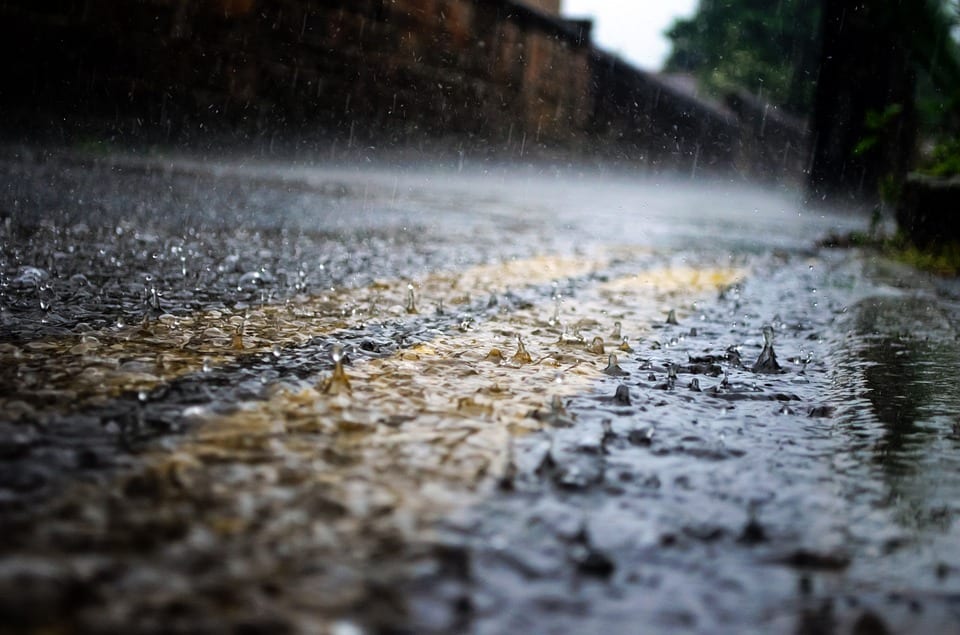In South Florida, as in many other parts of the nation and the world, people rarely do not stop to consider where all the water that washes off roadways and buildings end up. While walking back to the residence halls on a rainy day, I was shocked to see some trash being washed down into a nearby storm drain. This got me thinking, “I wonder where all the stuff that washes into this drain ends up?” I set out on a quest for the truth, and what I learned freaked me out.
You might ask yourself, “Well, what’s so wrong with some trash being washed down a storm drain. It’s gone, so it’s not my problem, right?” Wrong. This trash and other objects that enter storm drains tend to contain some pretty nasty stuff. Storm water can contain anything from stray debris, dirt, toxic chemicals and other human-produced pollutants.
Once in the storm water system, these pollutants usually flow into local waterways we use for recreation, food or other human purposes. Not only does this affect our own health and well-being, but it directly impacts the survival of many plant and animal species that reside in coastal areas where this storm water is discharged.
There are many adverse effects associated with storm water discharge in coastal areas. For one, sedimentation from stray dirt, often due to construction activities, reduces water clarity and thus light availability, which can stunt or totally prevent the growth of coastal plants. The end result might be the destruction of entire coastal habitats and ecosystems as their natural balance has been disturbed.
Debris such as plastic, cigarette butts, electronic equipment and other forms of trash can be washed into local waters and choke, suffocate or otherwise disable animals such as fish, turtles and birds. Turtles, for instance, will mistake a plastic bag for a jellyfish and eat it. Once ingested, it cannot be broken down, and this causes the animal to eventually die as the toxins found in that plastic are leached into their bodies.
Another possibility is that animals might choke on plastic while in the process of eating or get entangled in a six pack ring. It is sad and quite unfortunate that these animals are so affected by the actions of humans who do not take the time to think about what is going to happen to their waste, and as such, these organisms pay the price for our actions. It also turns out that plastics and other toxins bioaccumulate in the food chain, and our big catch turns out to be the very fish that were consuming our plastic trash.
Right now, the ocean is basically our personal toilet bowl for all of our chemical pollutants and waste. According to an NPR broadcast, titled “How Plastic in the Ocean is Contaminating Your Seafood,” plastics act as sponges for chemicals that are already out there in the water. If that’s not shocking, then take into account that the weight of plastic that is found in the sea each year is estimated to be equivalent to the weight of 40 aircraft carriers, according to NPR. Choke on that.
Household hazardous wastes such as paints, motor oils, auto fluids and pesticides can lead to poisoning of aquatic organisms. These toxic substances can pollute drinking resources and can negatively affect the health of humans who ingest fish and other forms of life that have been exposed to polluted areas. This has a heavy economic price tag attached, as seafood prices increase due to the lower availability of safe seafood products. Additionally, water treatment costs increase when pollutants contaminate drinking water sources.
Now that we know a little more about how storm water affects local coastal areas and organisms, let’s look at the solutions. For one, residents can start by properly disposing of household products that contain harmful chemicals. It is very important to read the labels and know what you are dealing with, how hazardous is it and how to use and dispose of it properly.
Secondly, residents can simply recycle their non-toxic waste in order to prevent it from ending up in coastal waterways. Car owners can use car washes that treat or recycle their wastewater instead of dumping wastewater into storm drains or onto the street where it can be washed into these drains.
It turns out carwashes are usually extremely efficient when it comes to water. The Department of Public Works has set up automatic systems that catch debris before it gets the chance to enter our local waterways. Pumps are used to separate the larger floatable items that have made their way into the system. Once filtered out, the debris is collected for disposal.
The department also has a list of ways citizens can get involved in helping prevent storm water pollution, some of which include reporting illegal dumping of materials and solvents into storm drains. Also, if you see clogged storm drains or overflowing manholes, this could be a sign of an even bigger problem, so contact their 24-hour Customer Service Center at 954-828-8000.
Remember, although you might not see where your soda bottle ends up, it does not mean that you shouldn’t care about what happens to your waste. Collectively, our actions can have a great impact on the ecosystems of many organisms. It’s their planet, too, and so we must strive to ensure that they have a place to call home like we do. So let’s strive to do our best to clean up our home, our planet and our act.


